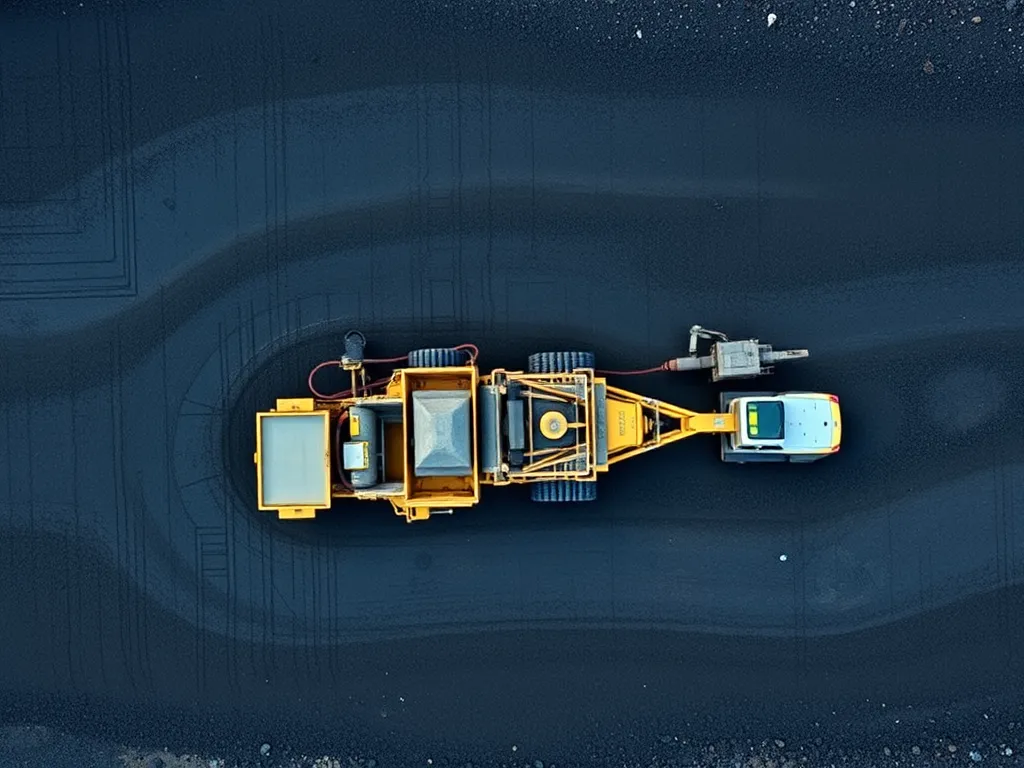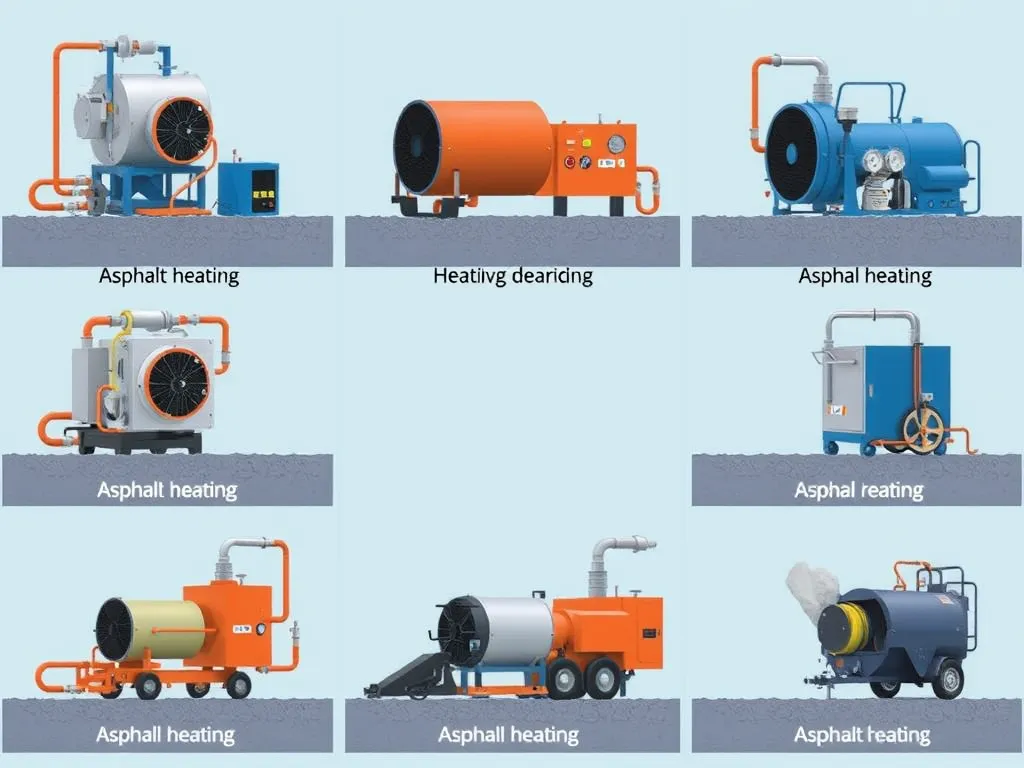Benefits Of Advanced Asphalt Pouring Techniques
Published on: April 10, 2025 | Last Updated: April 14, 2025
Written By: George Voss
Advanced asphalt pouring techniques use modern methods like precision temperature control, laser-guided equipment, and recycled materials to create longer-lasting roads at lower costs. These methods differ from traditional approaches by focusing on exact material placement, reduced waste, and science-based mix designs like PG 64-22 binders. Contractors and property owners gain stronger surfaces, faster project completion, and up to 30% savings on paving budgets through these innovations.
This article breaks down five key advantages of upgraded asphalt practices. Explore how new compaction tools prevent potholes for 15+ years. See why recycled asphalt pavement (RAP) cuts material costs by $12-$18 per ton. Learn how infrared thermal profiling fixes cracks in half the time. We cover real-world applications for driveways, highways, and commercial lots—plus answers to top questions about durability and eco-friendly options.
Enhanced Material Durability and Longevity
Advanced asphalt pouring techniques boost how long pavements last. They tackle common wear issues head-on, cutting repair needs by up to 35% over standard methods.
Superior Performance Of Asphalt Concrete
Asphalt concrete mixes now use PG binders (performance-graded binders). These binders adapt to heat shifts from -34°F to 176°F. Roads stay flexible in winter and firm in summer.
Improved Resistance to Wear and Tear
New polymer-modified mixes handle heavy traffic better. Tests show 40% less rutting under truck loads. Steel rollers compact layers to 95% density, locking stones in place.
Protection Against Cracking and Weathering
Infrared healing tech seals tiny cracks before they spread. Thin spray seals block UV rays and water seepage. This adds 8-12 years before major fixes.
Advanced Compaction Methods for Structural Integrity
Smart rollers use GPS to track coverage. They apply 20-30 tons of force per pass, hitting target density fast. Air voids stay below 5%, keeping water out and strength high.
With these upgrades, pavements handle more stress for longer. Next, let’s break down how smarter methods save cash over time.
Increased Cost Efficiency in Asphalt Projects
Modern methods cut spending while boosting quality. Projects using upgraded methods see fewer budget overruns due to smarter material use, less downtime,
Reduced Maintenance and Repair Needs
Precision placement lowers future fixes. Techniques like thermal profiling ensure even heat distribution during the
Minimized Machinery and Labor Costs
Streamlined workflows shrink workforce demands. Synchronized laydown systems paired with GPS-guided pavers cut manual labor by 25%. Fewer machines run for shorter periods—saving $15–$20 per ton on fuel. One crew can now handle tasks previously needing three, trimming labor costs by 15–20%.
Optimized Use of Equipment and Resources
Telematics track machinery health, preventing costly breakdowns. Real-time data adjusts paver speed
These innovations set the stage for smoother workflows. Next, we’ll explore how refined methods speed up project timelines without cutting corners.
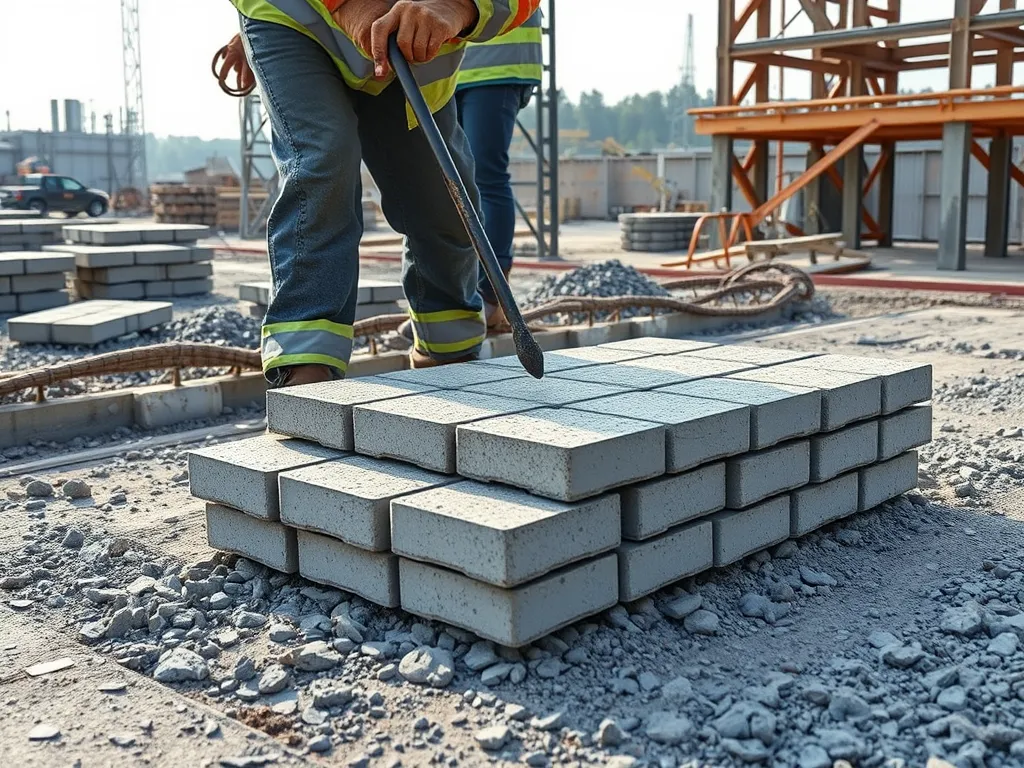
Optimized Installation Process and Workflow
Advanced asphalt pouring techniques streamline paving jobs. They cut waste, boost speed, and raise quality. This mix of gains makes each project run smoother from start to finish.
Precision in Asphalt Pouring Techniques
New methods nail exact spread rates and layer depths. Laser-guided tools and real-time sensors adjust pours on the fly. This sharp control stops weak spots before they form.
Temperature Control for Optimal Fluidity
Hot mix asphalt stays workable between 275-325°F. Infrared tech tracks heat loss during transport. Trucks with heated beds keep temps steady. Proper heat means smooth pours that bond tight as they cool.
Efficient Use of Specialized Equipment
Modern pavers lay 12-foot-wide strips in one pass. Oscillating rollers compact edges without tearing fresh mix. Gear like spray-pave rigs cuts hand work by 40%. Less re-dos mean lower fuel burn per square yard.
Accelerated Project Timelines
Fast-track paving slashes lane closure times. A 1-mile road job now takes 3 days vs. 7 with old methods. Quick-set additives let traffic roll in 4 hours. Shorter builds trim labor costs by up to 30%.
These process upgrades do more than speed things up. They set the stage for greener paving choices too…
Also See: Cooling Vs Curing in Asphalt: Key Differences
Sustainable Asphalt Practices and Environmental Benefits
Modern methods in asphalt pouring techniques now prioritize eco-friendly solutions without compromising quality. These innovations reduce resource use while meeting strict performance standards for asphalt paving projects.
Incorporating Recycled Asphalt Pavement (RAP)
Using RAP—reprocessed old pavement—cuts material costs by up to 30% while keeping structural strength. Advanced asphalt placement techniques blend RAP with virgin mixes at ratios reaching 30-50%, tested through PG (Performance-Graded) binder systems. This diverts 90 million tons of waste from landfills yearly. Infrared thermal profiling ensures seamless bonding during asphalt pouring processes, preventing weak spots in recycled layers.
Lowering Carbon Footprint Through Efficient Techniques
Warm-mix asphalt paving techniques lower production temps from 300°F to 250°F, slashing fuel use by 20%. Smart compaction systems with GPS mapping cut idle machine time by 35%, reducing diesel emissions. Thin-lift overlays—a key asphalt resurfacing technique—require 25% less raw material per square foot compared to traditional methods. Projects leveraging these strategies report up to 18% lower CO₂ outputs per mile paved.
These sustainable strides set the stage for exploring how advanced asphalt installation methods adapt to projects of every size.
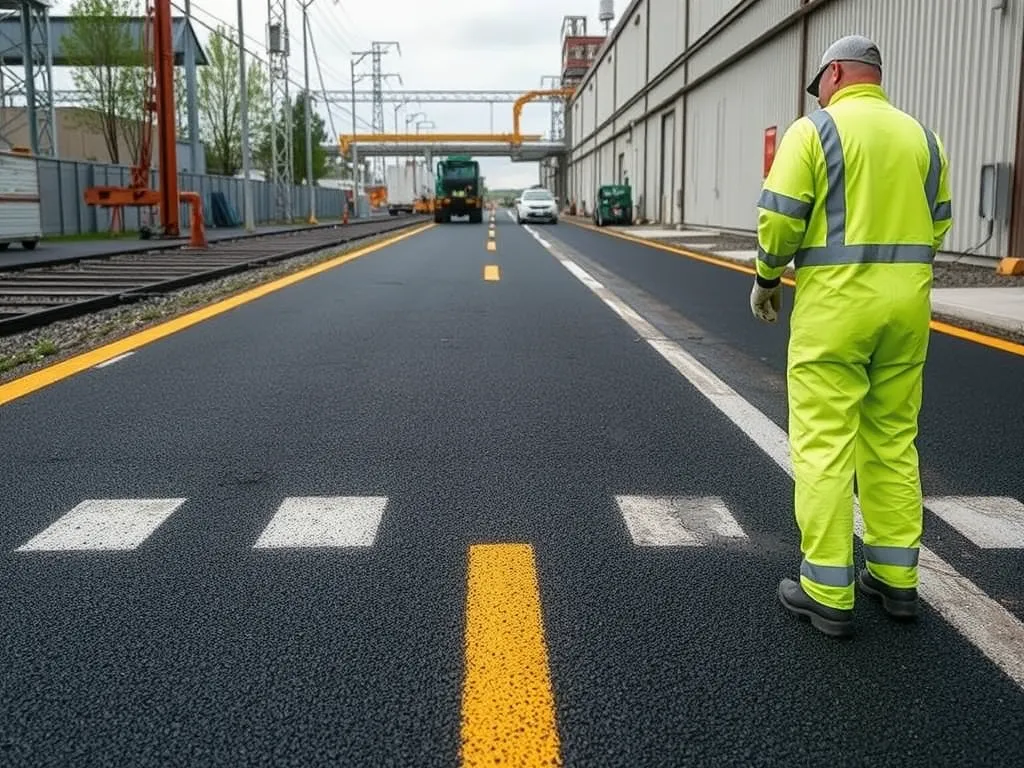
Versatility in Asphalt Paving Applications
Advanced asphalt pouring techniques unlock adaptability across surfaces and scenarios. From residential driveways to interstate highways, these methods meet varying demands with precision.
Effective Resurfacing With Asphalt Overlay
Asphalt overlay extends pavement life by adding a fresh layer over existing surfaces. Modern methods like infrared thermal imaging ensure seamless bonding, eliminating gaps that cause water infiltration. Using recycled asphalt pavement (RAP) in overlays cuts material costs by 15-30% while maintaining structural strength. This approach skips full tear-outs, reducing project timelines by up to 40% compared to traditional replacements.
Adapting Techniques for Diverse Project Scales
Advanced asphalt installation adjusts to project size without sacrificing quality. For small-scale jobs like driveways, tracked pavers apply thin layers at 290°F for smooth finishes. Large road projects use tandem vibratory rollers achieving 92% density in base layers. Temperature-controlled trucks keep mixes between 275-325°F during transport, ensuring workability regardless of distance.
Solutions for Driveways, Roads, and Industrial Surfaces
Driveways benefit from polymer-modified binders that resist oil stains and UV damage. Road projects employ high-density compaction for 20+ years of heavy traffic endurance. Industrial lots use stone-matrix asphalt mixes with 30% RAP, handling loads exceeding 80,000 lbs. Porous asphalt installations manage stormwater at rates of 500 inches per hour, ideal for parking lots in flood-prone areas.
These advancements prove asphalt’s flexibility across environments. Next, let’s explore how professionals tackle frequent queries about these methods.
Addressing Common Questions (FAQ)
What Are the Benefits Of RAP Asphalt?
The benefits of using Recycled Asphalt Pavement (RAP) include significant cost savings, enhanced structural integrity, and a reduction in landfill waste. RAP can also conserve natural resources by minimizing the need for new materials, making it an eco-friendly choice for sustainable paving projects.
Why is Asphalt Overlay Important?
Asphalt overlay is crucial because it extends the life of existing pavements without the need for a complete reconstruction. This method is more cost-effective, reduces downtime, and helps to improve the overall surface conditions, preventing further deterioration.
How Does Asphalt Concrete Enhance Performance?
Asphalt concrete enhances performance through its ability to adapt to varying temperatures and loads. The use of performance-graded binders ensures flexibility in colder temperatures and firmness in warmer conditions, which leads to reduced cracking, ruts, and overall wear, thus enhancing the roadway’s lifespan.
How Do Advanced Techniques Affect Asphalt Pouring Quality?
Advanced techniques improve asphalt pouring quality by ensuring precise control over material placement and compaction. Technologies such as laser-guided systems and real-time monitoring allow for consistent thickness and density, reducing voids and weak spots that can compromise the pavement’s durability.
What Environmental Advantages Come With Advanced Asphalt Pouring Techniques?
Advanced asphalt pouring techniques offer environmental advantages, including a reduced carbon footprint through lower production temperatures and the integration of recycled materials like RAP. These methods not only cut emissions but also promote sustainable practices by diverting waste from landfills.
Can Advanced Techniques Be Used for Small Projects?
Yes, advanced asphalt pouring techniques can be effectively utilized for small projects such as residential driveways. Innovations like temperature-controlled trucks and smaller tracked pavers allow for high-quality results across various project scales without compromising performance or durability.
What is the Impact Of Temperature Control in Asphalt Pouring?
Temperature control is critical in asphalt pouring as it ensures that the mix remains workable during application. Proper temperature management helps achieve a smooth finish and enhances the bonding of layers, ultimately leading to stronger, more durable pavements.
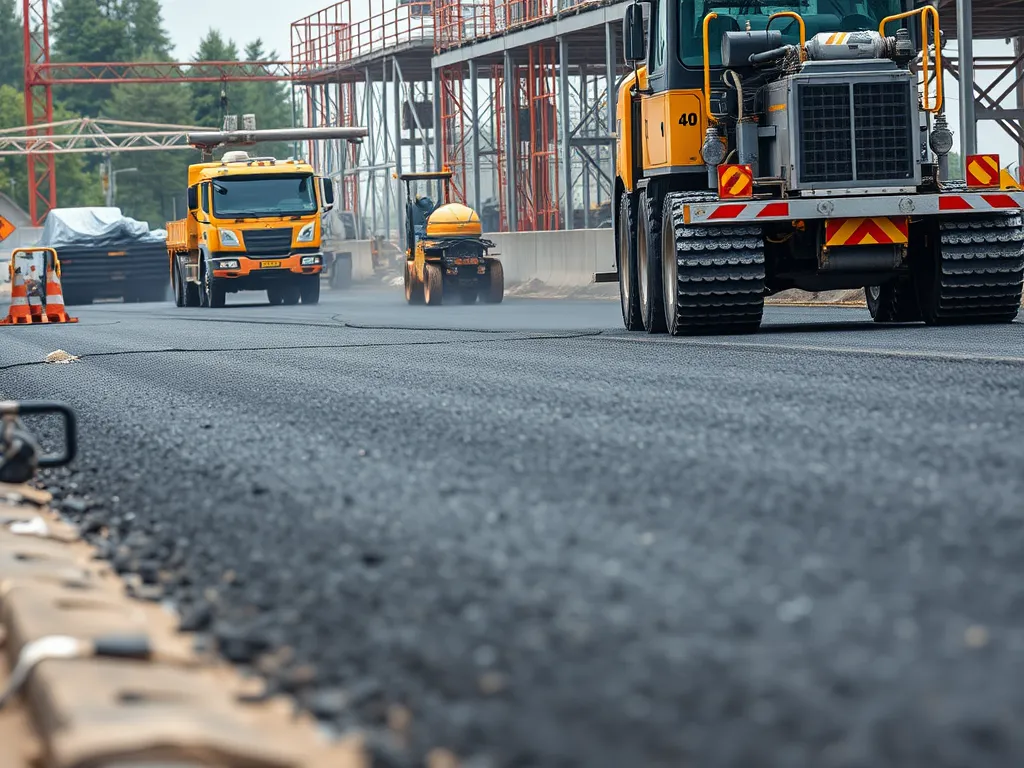
Closing Thoughts
Advanced asphalt pouring techniques significantly enhance the durability, cost efficiency, and environmental impact of paving projects. With superior resistance to wear and tear, these methods ensure long-lasting road surfaces that withstand the test of time. The incorporation of recycled asphalt pavement (RAP) not only minimizes waste but also lowers the carbon footprint associated with new asphalt production.
Optimized installation processes lead to streamlined workflows, allowing for quicker project completion without compromising quality. This efficiency translates into noticeable savings in maintenance and operation costs over the lifespan of the pavement.
These innovative techniques adapt well to various paving applications, from residential driveways to large-scale industrial surfaces, making them a versatile choice for diverse projects. By embracing advanced asphalt practices, you can achieve remarkable results while contributing positively to the environment.
For more in-depth information on asphalt techniques and benefits, visit Asphalt Calculator USA.
Useful References for You:
- The Asphalt Institute (Technical Resources & Standards)
- The Complete 7-Step Process for Asphalt Pavement Installation
- Asphalt Pavement Construction – Asphalt Institute
- Asphalt Planning: Everything You Need to Know About Ground Preparation, Types of Asphalt, and the Best Time to Lay It
- The Basics of Asphalt Paving – Lone Star Paving

